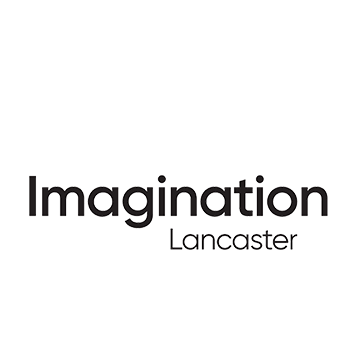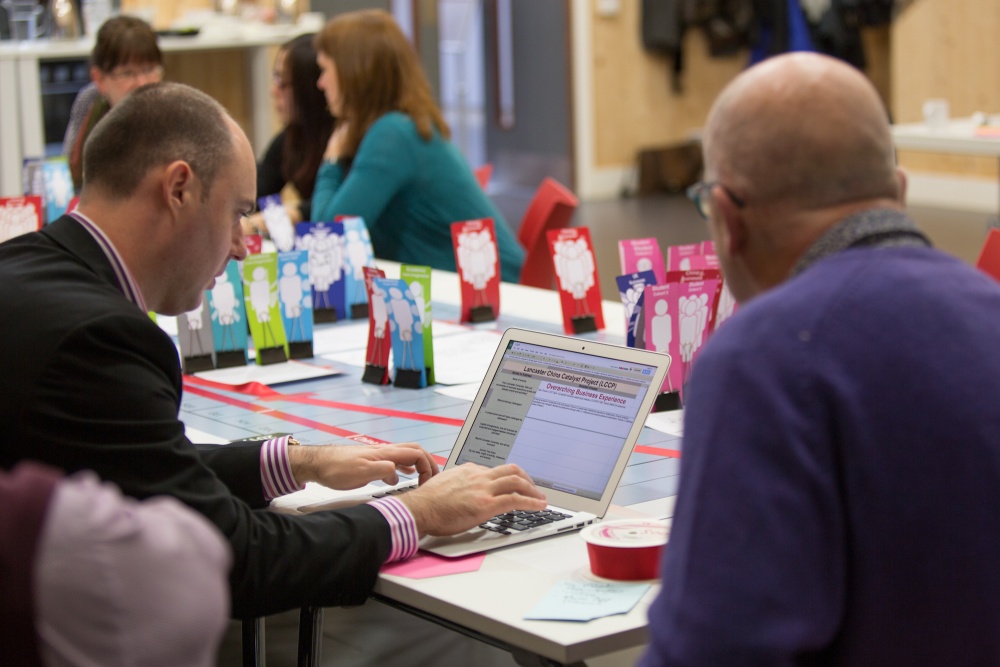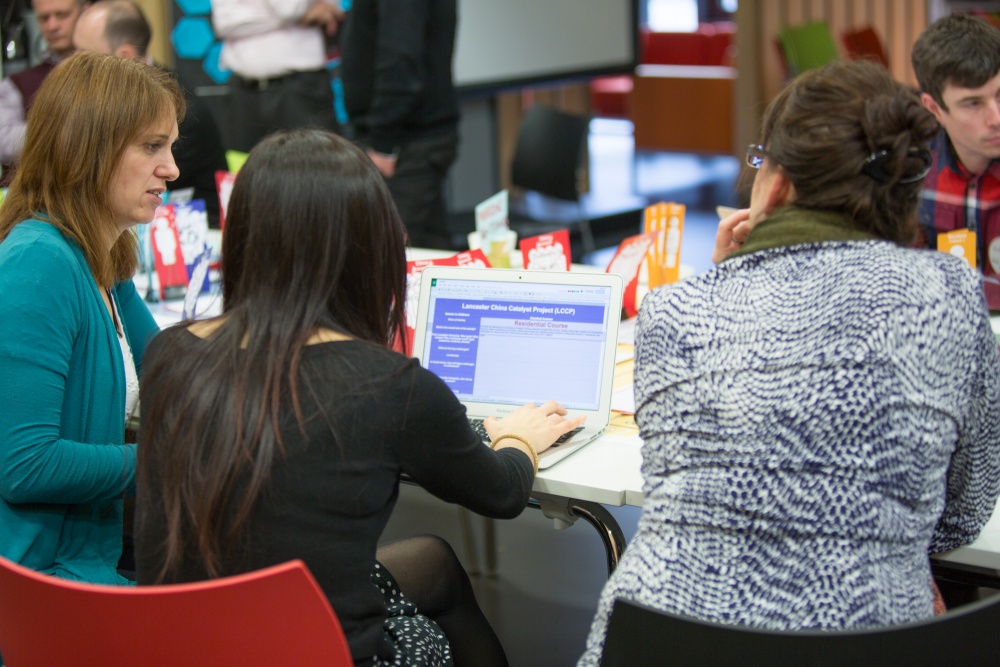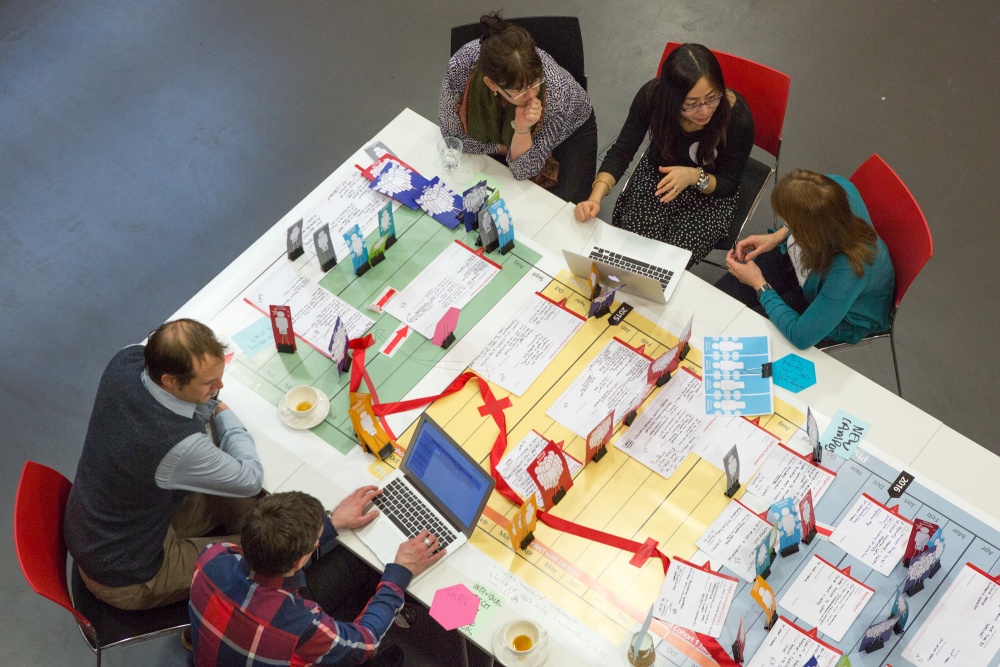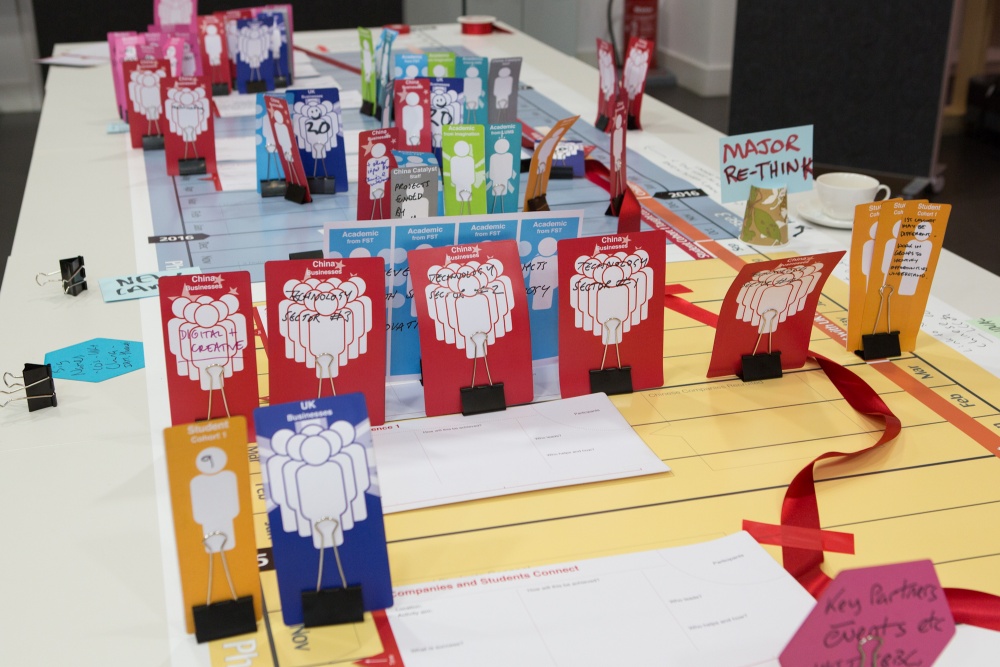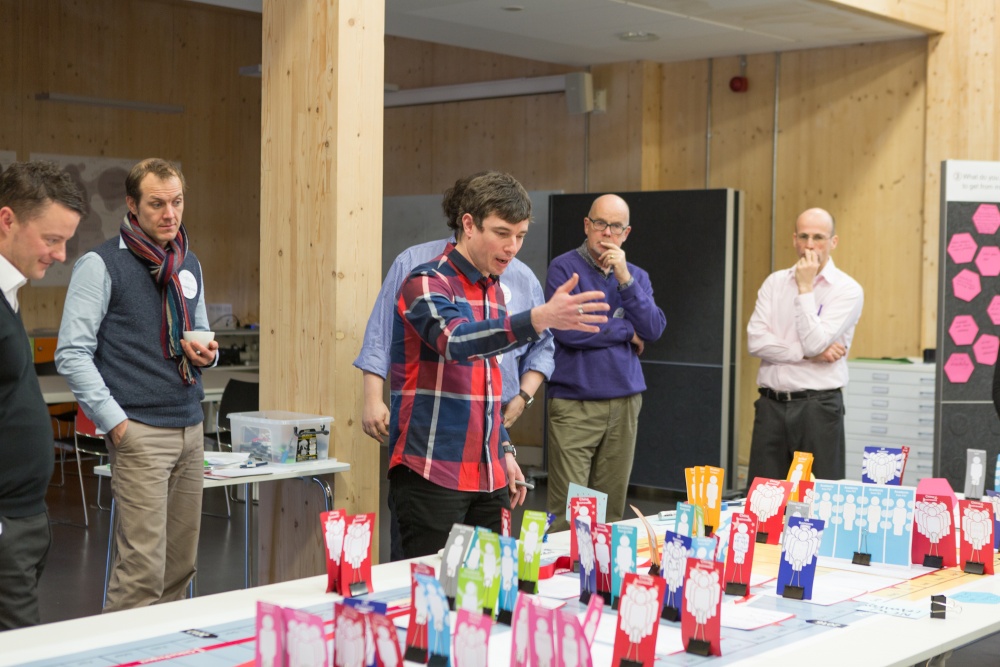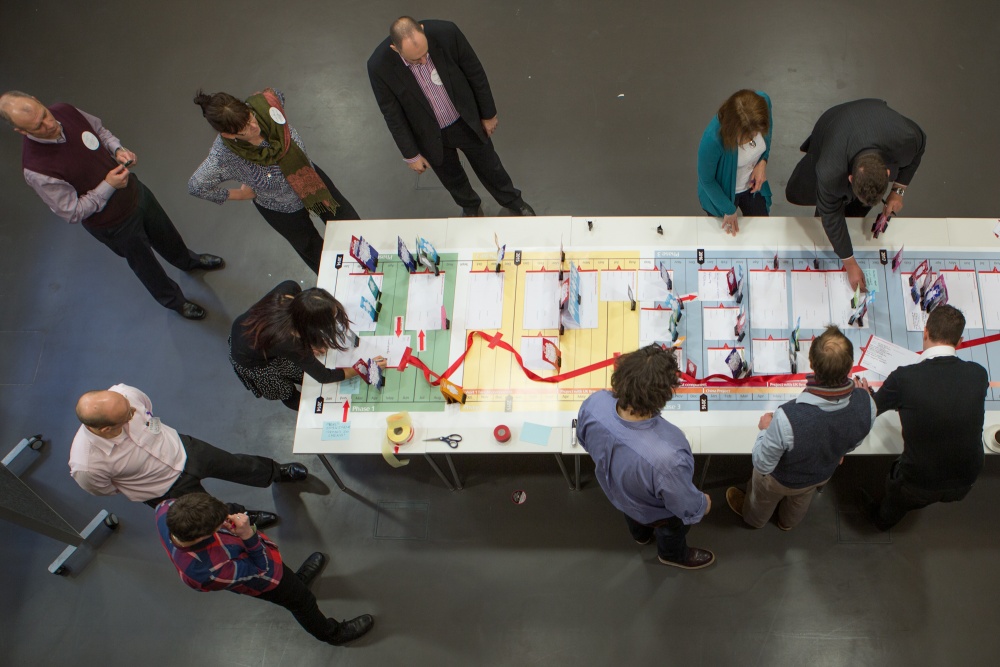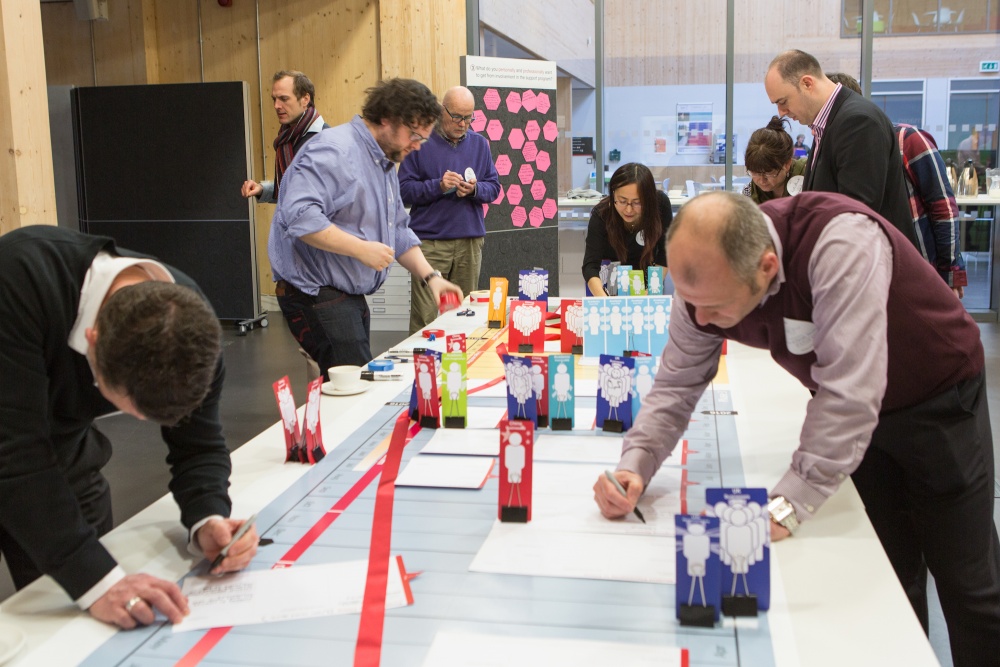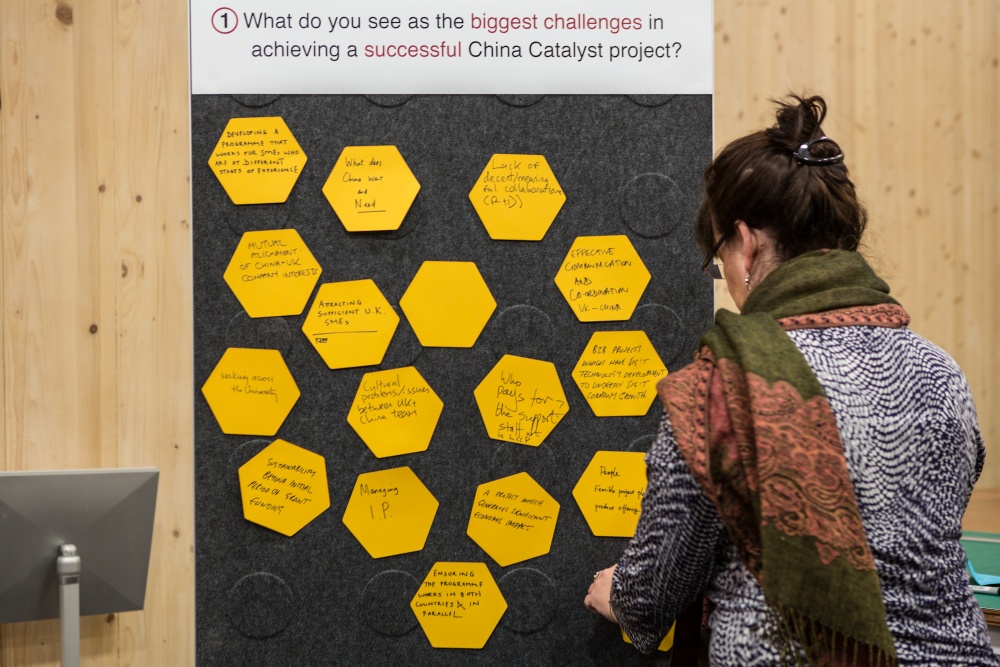Twelve people involved in the project planning including China Catalyst Staff and academics and professionals from Project Support, Faculty of Science and Technology, the Management School and LICA attended the workshop.
Workshop Structure
At the beginning of the day, the participants were asked to answer three questions by writing their answers on to different coloured hexagon shaped cards and sticking them onto boards beneath the relevant question. This acted as a warm up but also encouraged the participants to think particularly about the abilities, skills, networks and other resources that they could utilise during the programme.
Following this, everyone was introduced to a large-scale four-year timeline laid out on a table with individual card sections representing each part of the programme. The group were taken through three stages of populating the timeline. The stages were as follows:
- Together the participants reviewed the timeline, agreeing on the structure of the programme that was laid out.
- Abilities, skills, networks and people were added to the timeline
- In small groups the participants then worked together to fill in the details of section of the programme on the timeline.
During the afternoon, small groups filled in further details of each programme section online using Google Docs. Each group’s detailed answers were compiled on a Master Spreadsheet, which was displayed on a projector during the workshop.
The Spreadsheet is available for a limited time for the attendees to add or edit information that may come to mind following the workshop.
Workshop Tools
New knowledge exchange tools were designed as part of the New Ideas project and used during the workshop. These tools included the four metre long table-top timeline, populated by individual pro formas for each section of the China Catalyst program, along with counters representing the stakeholders involved with the project, such as UK and China businesses, university academics, project staff and two cohorts of masters students. Supporting materials such as stickers, coloured tape and thick pens were available for creatively adding additional information to the timeline.
The design of the timeline enabled everyone to stand around it and see the structure of the programme and then dive into individual sections and events, adding details to specific pro formas. This activity was lively and encouraged the participants to think creatively.
Google Docs Spreadsheets were used for the first time to enable the participants to work simultaneously on the same spreadsheets and almost instantly collate the information together on a Master Spreadsheet, that was then displayed to everyone. This meant that details for each section of the program were typed up and available for further input after the workshop.
To view more images, go to the New Ideas Flickr account.
